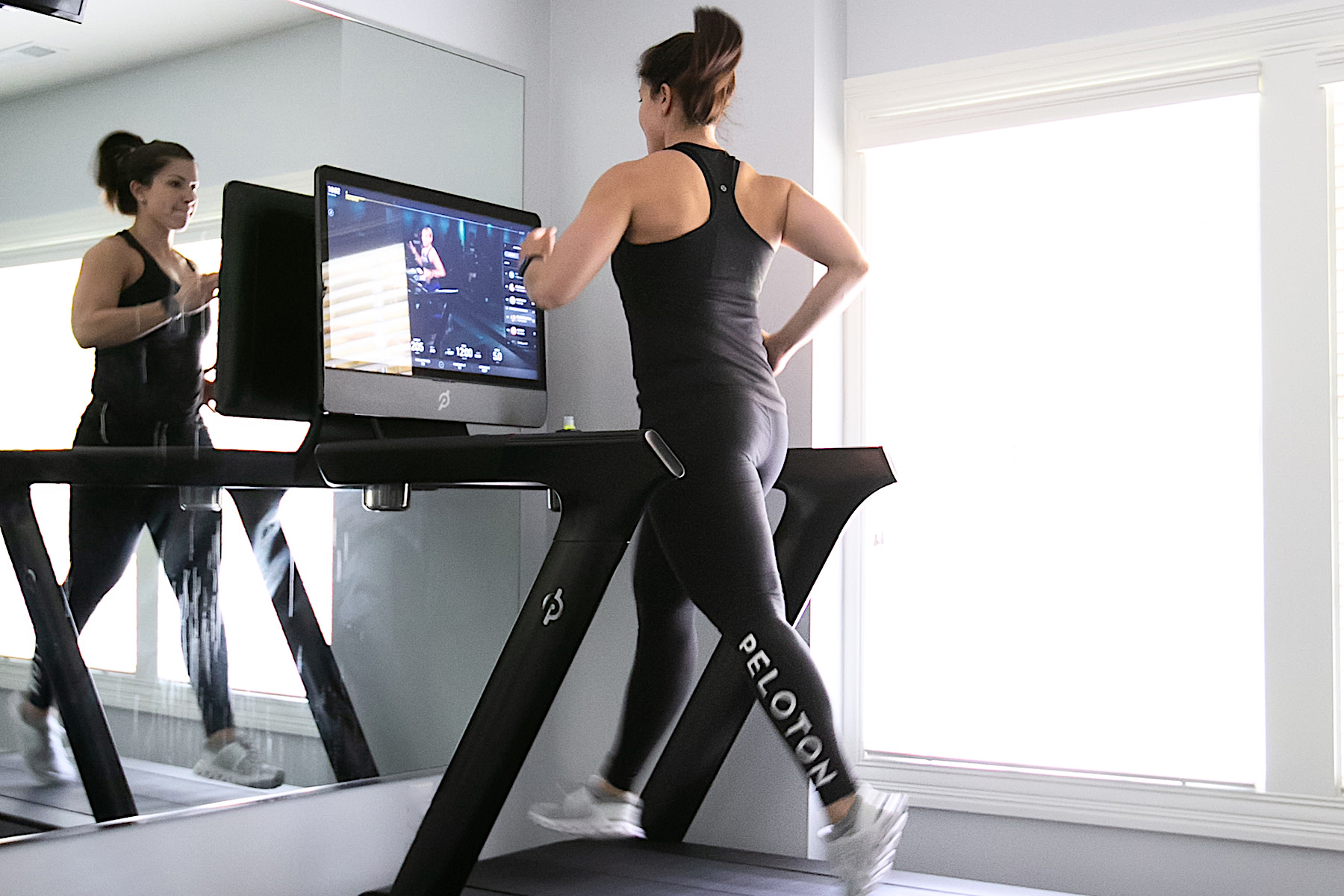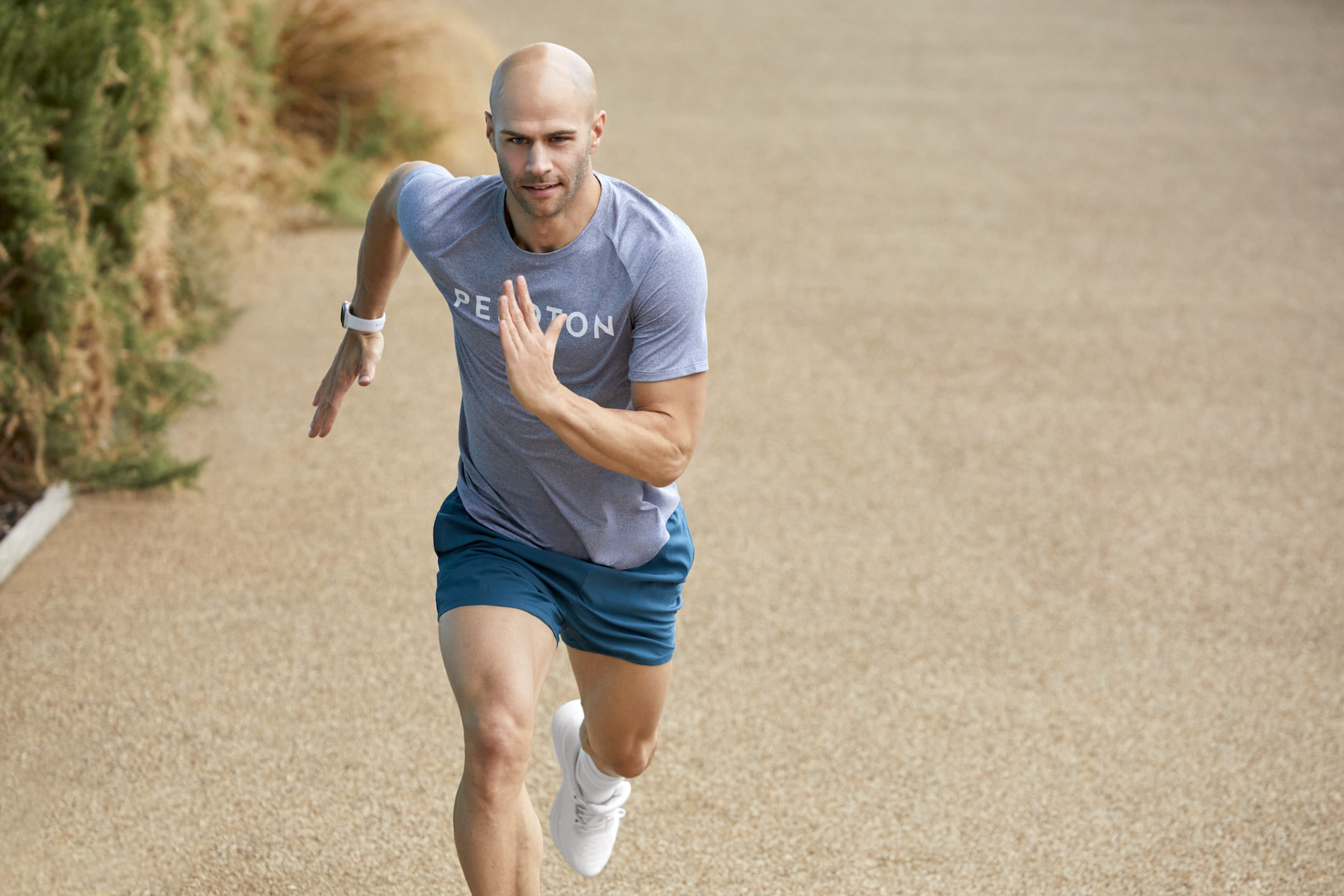
Exactly How To Make Your Treadmill to Road Transition Smooth and Safe
Ease your body into it and you’ll reap the rewards to the road.
By Kristine Thomason•
The Differences Between Treadmill & Outdoor Running
Step-by-Step Guide to Moving Outside
When to Opt for the Treadmill vs. Outdoor Running
If you’ve been logging miles indoors all winter, you may be itching to take your runs outside now that spring has officially made its grand entrance—and understandably so. There are few things more glorious than feeling the sunshine blanket your body as you stride through parks or city streets, with your favorite Peloton instructor sharing words of encouragement in your ear or otherwise.
However, the experience of running on a treadmill versus the pavement can feel pretty significant, and many runners who are accustomed to the former may find the transition jarring.
To help make the pivot as seamless as possible, we chatted with Peloton running instructor Logan Aldridge about his tips and tricks for easing the leap from tread to road.
The Differences Between Treadmill & Outdoor Running
At first glance, the difference between running on a treadmill versus the outdoors can seem pretty negligible. After all, in both cases, you’re running—one foot in front of the other, glutes and core engaged, arms at 90 degrees, the works.
But Logan notes there are some notable differences between the tread and road when it comes to the demands on your body.
First and foremost, a treadmill such as the Peloton Tread helps absorb some of the shock from your stride, and therefore has a lower impact on your joints than the road. So if you’re a runner who deals with joint pain, Logan suggests proceeding with caution when it comes to training on harder pavement.
What’s more, running indoors leads to “less muscle fatigue and recruitment, since the tread belt helps propel your leg behind you,” says Logan. So if you’re new to the sport, you may initially tire more easily when you take your miles outdoors. “Similarly, for advanced runners,” he adds, “a treadmill allows you to go for sustained pace on harder or longer efforts.”

That brings us to another major differentiator: pacing. When you’re on a treadmill, the pace is programmed, so maintaining a set speed is much more seamless—you can just set it and forget it. “When you run outdoors, it's harder to always hit that exact pace every time,” Peloton Tread instructor Selena Samuela shared in a previous article on The Output about treadmill sprints (read more about that here). While a fitness tracker or watch can help you measure your pace outdoors, it’s nevertheless more challenging to stay consistent as your body begins to fatigue, especially for beginners.
Even for more advanced runners, there are benefits to leveraging the treadmill as a training tool—particularly when it comes to speed work. “Using the Tread to get used to goal paces is great, because you become accustomed to what it should feel like in a controlled setting,” says Selena.
Lastly, weather and terrain is another major factor to consider. “Treadmill is a better option when weather conditions or location do not allow for outdoor running,” says Logan. That could mean icy roads, an unpleasant downpour, or even unbearable heat. When the elements are not in your favor, a treadmill can be your best friend.
Navigating new terrain can also take some getting used to, if you’re accustomed to the obstacle-free tread. If you’re running on trail, for instance, you will likely need to decrease your pace and recruit slightly different muscles while navigating hills, uneven or muddy paths, and even the occasional hole or fissure.
On the flip side, at times, nature may actually enhance your overall running experience. In fact, a recent study published in Nature found that exercising outdoors could have additional benefits for your brain when compared to completing the same workout inside. What’s more, many runners find taking their miles outside can break up the monotony and increase mental stamina, especially on longer runs.
Step-by-Step Guide to Moving Outside

If you feel ready and motivated to incorporate more outdoor runs into your routine, here are some strategies Logan suggests to make the transition a breeze:
1. Start Slow
When you first begin incorporating outdoor runs into your routine, Logan recommends beginning with a slower pace until you get your footing. As one study suggests, outdoor runs can be more physically taxing on the body. So be patient, and give yourself the space to acclimate to your new running environment. As your body gets used to trail or road running, you’ll be able to comfortably and safely increase your speed.
2. Alternate Your Workouts
Keep in mind, this doesn’t have to be an all or nothing pivot. When you first start incorporating outdoor runs, Logan suggests alternating them with treadmill sessions. Similar to breaking in a new pair of running shoes, this method will help your body grow accustomed to the new type of workout, without overtaxing your body right out of the gate.
3. Prepare Your Body
Don’t underestimate the power of properly warming up before a run. Doing so can help minimize injury, improve your range of motion, prepare your body for movement, and optimize performance.
That’s why Logan highly recommends moving through a dynamic warm-up before you head outdoors to log miles. This simple five to ten minute practice can help support your body when you head outdoors, and it can also be a great add-on for your indoor treadmill runs, too. Not sure where to begin? The Peloton App has a number of fantastic pre-run stretch classes that will only take you five minutes to complete.
While you’re at it, consider tacking on a cooldown or post-run stretch, for a true fitness one-two punch.
(You can learn more about the importance of warm-ups and cool-downs here.)
4. Prioritize Recovery
Speaking of taking care of your body, be sure to build in some recovery time, suggests Logan. Especially if you’re incorporating new types of workouts into your routine (i.e. outdoor runs), it’s imperative to factor in rest.
“The more that you rev up that intensity, the more that you want to have some recovery days,” Yuri Feito, Ph.D., associate professor of exercise science at Kennesaw State University in Kennesaw, Georgia previously shared with Peloton. But keep in mind, “Recovery doesn’t necessarily mean that you do absolutely nothing, it just means that you’re not working at the intensity at which you are spending most of your time,” says Dr. Feito.
Recovery might come during your workout itself, such as taking a few extra walk breaks during your run. As Logan suggests: “Give yourself moments of recovery before you think you need it.”
It might also look like spacing out your running days, or incorporating lower-intensity movement in your routine (think: yoga, Pilates, walking, stretching, etc.)
When to Opt for the Treadmill vs. Outdoor Running
Now that you have all the facts, it begs the question: will your next run be indoors or out?
Well, as Logan puts it, “as long as you’re not experiencing joint pain, anytime is a great time to get outside!” So if you feel compelled to run in the fresh air, as long as you follow the tips and strategies above, there’s no reason to hold back.
However, “when the elements are not ideal,” he says, referring to the outdoor conditions, body pains, or time constraints, “the treadmill is always a good option to minimize excuses or obstacles for your workout.”
Ultimately, the choice comes down to your training goals, preferences, and, well, the weather. However you decide to move your body, as long as you proceed with care, it’s always a good choice.
This content is for informational and educational purposes only and does not constitute individualized advice. It is not intended to replace professional medical evaluation, diagnosis, or treatment. Seek the advice of your physician for questions you may have regarding your health or a medical condition. If you are having a medical emergency, call your physician or 911 immediately.
Level up your inbox.
Subscribe for a weekly dose of fitness, plus the latest promos, launches, and events.
By providing your email address, you agree to receive marketing communications from Peloton.
For more about how we use your information, see our Privacy Policy.